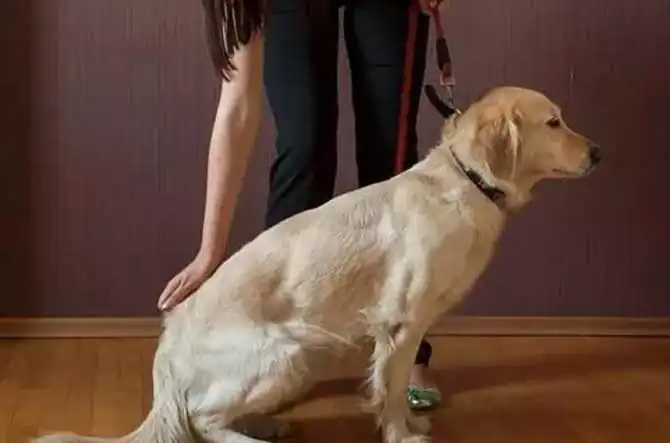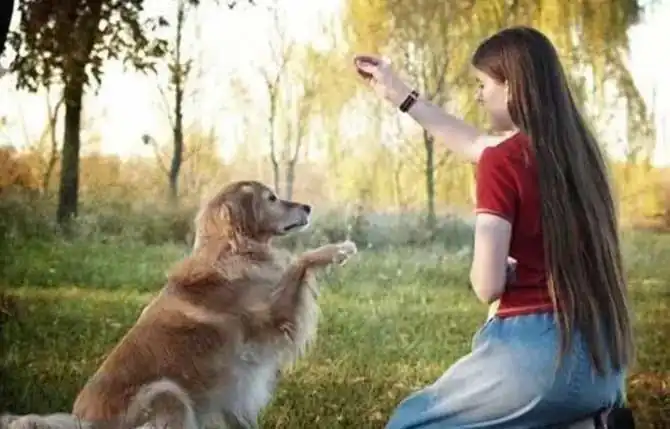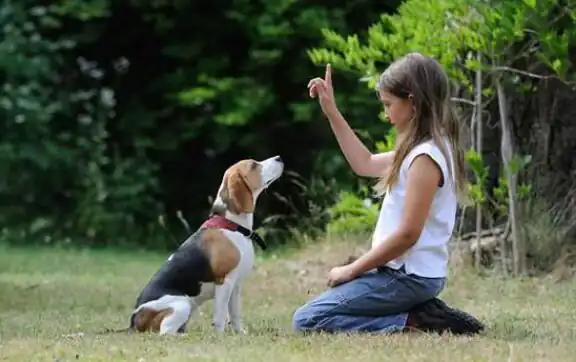
Waiting in place is a very practical skill in dog’s daily life. Pet owners, just imagine, when you mop the floor, when a friend comes to visit, when you open the door when you go for a walk, when an unknown object appears on the ground… At these moments, you need to let it understand what “waiting in place” means. Sitting still and waiting for a while is definitely a great happiness for dog owners. Unfortunately, any happiness will not fall from the sky. This requires you to pay great patience, use scientific methods to guide your dog to learn “wait in place”, and spend enough time to consolidate.

Starting from a distraction-free and familiar indoor environment, the first step in any training is to choose a good environment. In an environment without distractions, it is easier for the dog to concentrate, and a familiar environment will allow it to train with peace of mind. The editor of Feegle has recently started training his own dogs. The editor has summarized a few training methods to share with all pet owners:

1. Sit in front of you: If you don’t move, if he doesn’t move, first let the dog sit on your lap. In front of you, as long as it can sit in place for more than 1 second at the beginning, it is worthy of praise. Then 2 seconds, 3 seconds, 4 seconds… a man can survive 100 seconds! Don’t move around in the early stages of training, as your movements may interfere with it.

2. Add interference in front of it. If the dog has done well in the previous step, you can slowly add some interference at this time. For example, you can lift your legs, stretch your hands, let family members pass by, etc. Be careful to add interference. time, it also goes from easy to difficult, and the time it stays still increases slowly from 1 second to 2 seconds.

3. Slowly increase the distance between you and it. When you are in front of it, it can sit there and wait for a while without being disturbed. Then you can try to practice increasing the distance between you and it. Slowly retreat in front of it: one step, two steps, one step, two steps… But pay attention to the speed and initial distance of your retreat, and try to confirm its correct behavior every time you practice before it moves. Give reward.

4. Increase the distance from him from different angles. If you have practiced the previous step to the point where you can leave him at a sufficient distance and for a certain amount of time, then try to leave him from different angles to enrich the practice. For example, first gradually pull away from the side of it, and finally slowly pull away from behind it. Still following the principle of step-by-step, let it understand that the owner wants me to sit here and not move.

5. Can’t see you, but still doesn’t move. In this step, you can practice slowly disappearing from its sight, but you should also pay attention to starting from the distance and time it can accept. Your disappearing time will also be slowly lengthened. Practicing this well is of great significance for dogs with separation anxiety.

6. Change different scenes, from simple to complex. After completing the above steps of practice, the dog has fully understood the meaning of sitting still and waiting. Then at this time we need to go out of the house and do some exercises outdoors. Choosing a place for outdoor practice still starts with a simple scene. If you expect it to do this exercise among a group of playful companions as soon as it goes out, then you are overthinking. Finally, add an unlocking command for your dog, such as “OK”, which means you can move!
How about it? In fact, it is quite simple to learn. The key is not to force the dog to hold it still during the training process. This will make it feel scared and uncomfortable, and you should not scold the dog when it sometimes fails to meet your expectations. or punish it.
